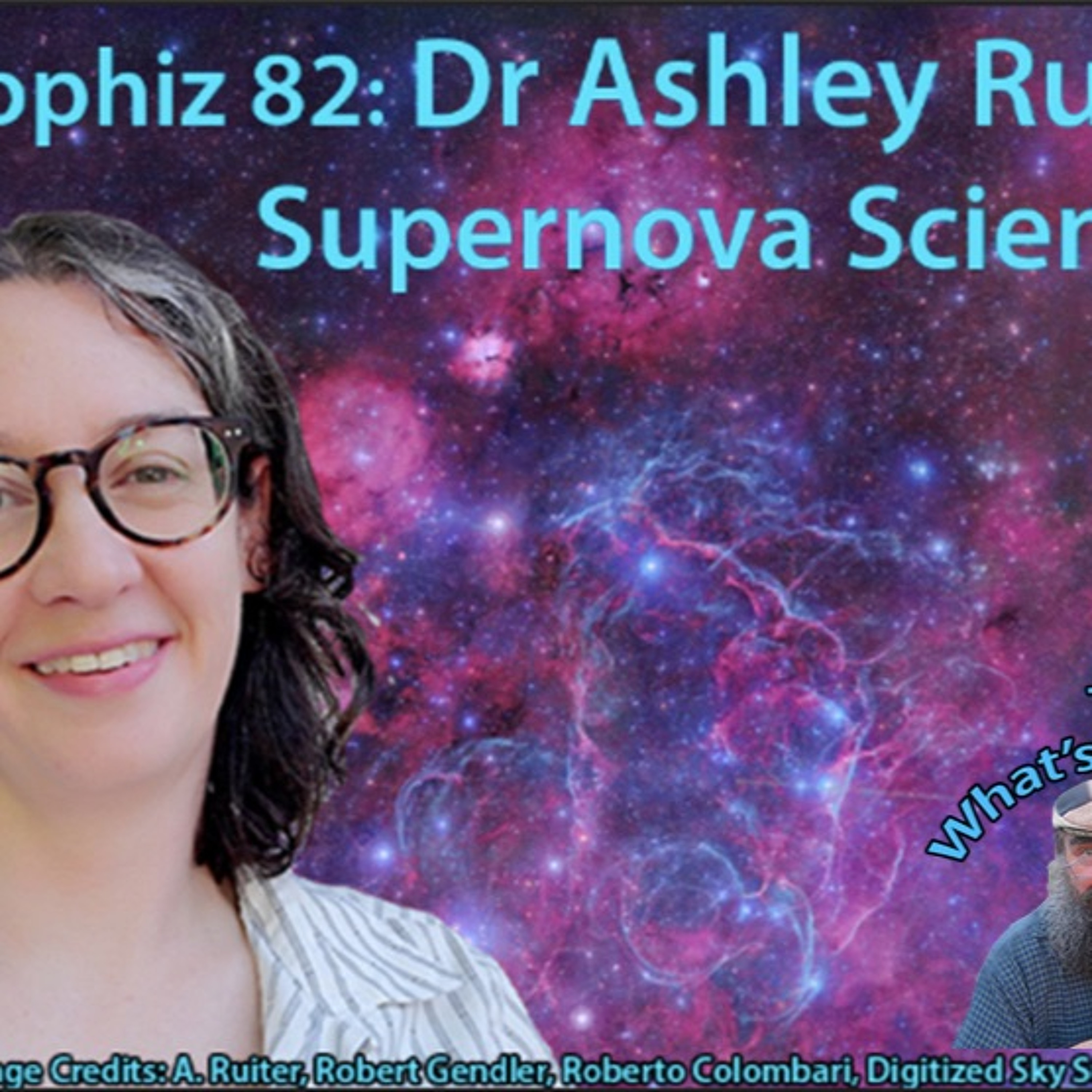Astrophiz82 - Dr Ashley Ruiter - Supernova Scientist

b'Astrophiz 82: Dr Ashley Ruiter - Supernova scientist\\nToday we are speaking with Dr Ashley Ruiter, ARC Future Fellow and senior lecturer in the School of Science at UNSW Canberra, Australia. She specializes in Type Ia supernovae and other transient phenomena from stars, in particular their origin, evolution history, and birth rates. Basically she researches anything that erupts, explodes, or merges, and also make predictions about which of these sources may be seen with gravitational waves using LISA. Dr Ruiter is currently looking for graduates to work under her supervision. Prospective PhDs can find out about this opportunity at TinyUrl-Dot-Com/ashleyastro\\n\\nIn \\u2018What\\u2019s Up Doc\\u2019 for astrophotographers and observers, Dr Ian \\u2018Astroblog\\u2019 Musgrave tells us what to look out for in the morning and evening skies. In \\u2018Ian\\u2019s Tangent\\u2019 he introduces us to a great citizen science project \\u2018Globe at Night\\u2019 which involves us measuring light pollution with our eyes and an app.\\n\\nIn the News:\\n\\n.1. Via NASA.gov \\u2014 NASA\\u2019s Fermi Satellite Clocks \\u2018Cannonball\\u2019 Pulsar Speeding Through Space\\n\\nAstronomers found a pulsar hurtling through space at nearly 2.5 million miles an hour \\u2014 so fast it could travel the distance between Earth and the Moon in just 6 minutes. The discovery was made using NASA\\u2019s Fermi Gamma-ray Space Telescope and the National Science Foundation\\u2019s Karl G Jansky Very Large Array (VLA).\\n\\n\\u2028.2. Via Nature Letters \\n\\nIn a paper titled \\u2018Massive white-dwarf merger product before final collapse\\u2019, Dr Vasilii Gvaramadze and Dr G\\xf6tz Gr\\xe4fener report observations of a hot star with a spectrum dominated by emission lines, which is located at the centre of a circular mid-infrared nebula. The widths of the emission lines imply that wind material leaves the star with an outflow velocity of 16,000 kilometres per second (that\\u2019s almost six million KPH) \\n\\n.3. The International Centre for Radio Astronomy Research (ICRAR) is appealing to members of the public interested in astronomy to climb onboard one of the biggest scientific projects of the next 10 years, AstroQuest (just google AstroQuest)\\n\\nVolunteers are needed to study images of far-off galaxies and figure out which light is coming from which galaxy as part of the citizen science project.\\n\\n\\u2028.4. Our next episode is from early career researcher Tommy Marshman, who used this podcast to find his astrophysics supervisor for his CAASTRO pulsar research for his Masters degree. So stay tuned into Astrophiz.'